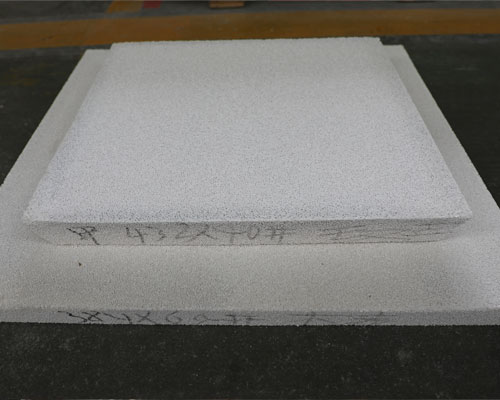Inclusions and gases in the metal have a significant impact on the strength, fatigue resistance, corrosion resistance, and stress corrosion cracking properties of the material. Effectively controlling the oxidized inclusions in the cast rod melt and improving the quality of the cast rod are the common goals pursued by the aluminum industry. At present, ceramic foam filter technology and purification methods are widely used for foundry molten aluminium filtration.
Ceramic Foam Filter uses good portiforium foam and high purity ceramic as raw material, which can remove the non-metal solid mixture from molten aluminum and aluminum alloy effectively in your aluminum casting industry. It can effectively remove large inclusions in aluminum liquid and adsorb micron-sized fine inclusion particles to improve surface quality, improve product performance, improve the microstructure and improve yield. It is widely used in the production fields of aluminum profiles, aluminum foils, and aluminum alloys.
Ceramic Foam Filter offers the best way to eliminate non-metallic inclusions, foreign materials that are a major source of quality problems in casting. and help you meet ever-increasing demands for quality.

Get rid of the impurity, refractory scrap, solid refractory alloy, sinter, in the molten metal liquid when casting the products, get rid of turbulent flow, reduce the air cavity of castings, raise the quality of the cast. So our ceramic foam filters (foamed ceramics) are widely used in the aluminum foundry industry, for preventing defects caused by oxides, dross, gas, slag, and other impurities. Eliminates turbulence in the metal stream, Smoothes out metal flow, avoiding sprays, splatter, and backset. Improve fluidity, castability, machinability, yield, and cost-effectiveness.
The foamed ceramic filter for casting has a multilayer network and multi-dimensional through holes, and the holes communicate with each other. During the foundry molten aluminium filtration process, molten aluminum carries inclusions and flows along tortuous channels and pores. When it comes into contact with the foam frame of the filter plate, it directly intercepts, adsorbs, deposits, etc. When the body flows in the hole, the filter plate channel is curved, the melt flowing through the channel changes the flow direction, and the inclusions collide with the hole wall and firmly adhere to the hole wall.

